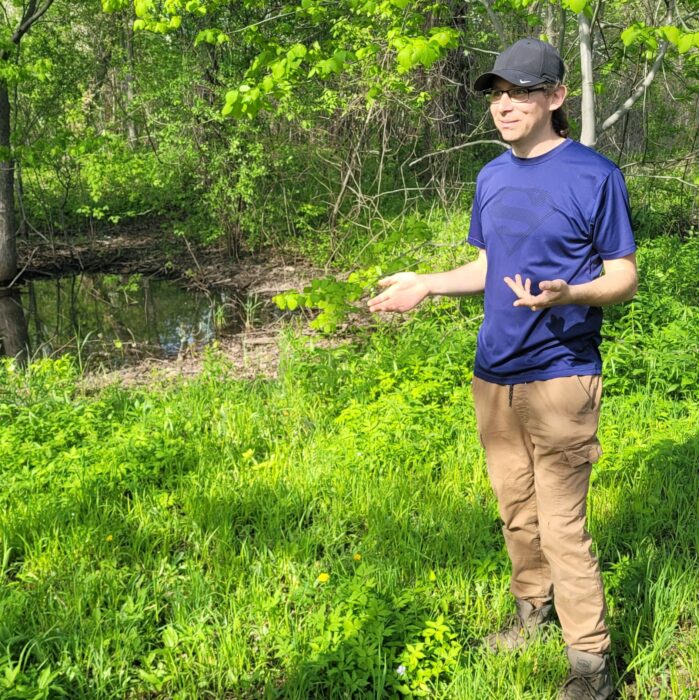
As the ancient waters of the Grand River whispered past Chiefswood Park on a warm and sunny spring afternoon last Thursday, the grasses, plants, and trees, once again awoken from a long winter slumber swayed softly in the wind, inviting everyone to witness their beautiful dance and importance in the Carolinian Forest ecosystem.
Although small, the verdant habitat surrounding Chiefswood Park provides a unique snapshot of the vast Carolinian forest and habitat and offers visitors a glorious opportunity to learn about the importance of the plants, trees, shrubs, ponds and wildlife that inhabit the lush woodlands of our geographic area.
Thanks to Kerdo Deer, ecotourism coordinator at Kayanase Greenhouse on Hwy. 54, visitors had the opportunity to take an intimate tour of the grounds at the historic park.
A leisurely and exploratory walk around the park will reveal some hidden vernal pools, which are small ponds that fill up and dry out every summer and provide an important habitat for salamanders, among other amphibians.
“Vernal pools are a very important habitat for salamanders and frogs,” said Deer. “Throughout Six Nations, this is what we commonly see, is the vernal pools.”
If you want to catch a peek at some salamanders on your property, as soon as it’s warm enough, at nighttime, they converge on the pools, said Deer.
In the winter, they burrow below leaves in the ground.
On Six Nations, you’ll find the yellow spotted salamander, the Jefferson salamander, and the redback salamander. You’ll also find the Eastern Newt, another type of amphibian.
“Those are the most common that I’ll see,” said Deer of the Eastern Newt. “They like these (vernal pools) because there’s no fish in them.”
That means less predators for their eggs.
The presence of salamanders is an indication of an area’s surface water quality, too, said Deer.
“They have semi-permeable skin so if the water is contaminated, it will affect their reproductive quality and survival.”
The pools also help breed mosquitoes. Mosquitoes are often thought of as the most diseased flying pest in the world, but they actually serve a purpose in the eco-system.
The males don’t bite and are important flower pollinators. They feed on nectar and are important for pollination, said Deer.
The females need blood to lay their eggs. So when a mosquito bites you, you and your blood are playing a role in the ecosystem, too!
The pools also host fairy shrimp, which are a food source for migrating ducks.
And if you ever come across a chokecherry shrub, common around southern Ontario, just stop and have a peek at the little pink flowers dotting the plant. You’ll notice the shrub is a literal beehive of activity for a plethora of insects.
Small, solitary native bees love chokecherry flowers.
Deer said humans have even used the small native bees to pollinate their own orchards. The small native bees are more efficient pollinators than honey bees, he said.
And aside from their incredible job hosting a wide variety of insects, the chokecherry shrub’s beautiful fragrance is intoxicating.
The Carolinian Forest covers a large swath of Southern Ontario and hosts 4,000 different types of plants, 73 varieties of trees and 370 varieties of shrubs.







